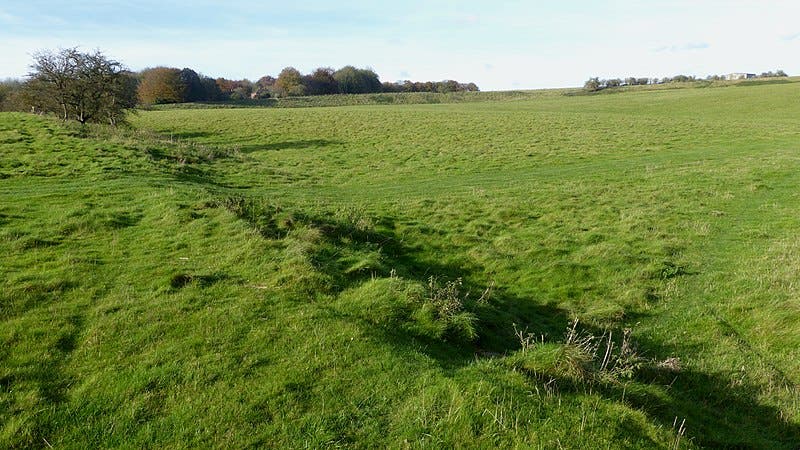Stonehenge has fascinated historians for centuries, with the origin and purpose of the mega-structure being a topic of endless debate. But it’s not just the structure itself — an entire complex was built around Stonehenge, a complex that is not only interesting in itself, but also because it can help us better understand the lives of these ancient people. For instance, just 2.8 km (1.7 miles) away from Stonehenge, there’s a settlement called Durrington Walls.

The site was first uncovered in the mid-2000s when an excavation first discovered seven horses and, upon further exploration, a settlement that had around 1,000 houses was uncovered; at its peak, it may have been the largest settlement in northern Europe. The site was used for about 500 years, around 2500 BC – the period when much of Stonehenge was constructed. Further analysis in 2020 showed a number of pits and natural sinkholes that had been modified to hold timber, and this circuit of pits may be Britain’s largest prehistoric monument, even larger than Stonehenge itself.
It’s remarkable that we still know so little about Durrington Walls and the people that inhabited it. To address this knowledge gap, a team of researchers from the University of Cambridge investigated 19 samples of ancient feces discovered at the site (from dogs and humans. Preserved for 4,500 years, this poop may be one of the first intimate clues to understanding these people’s lives.

Notably, 5 of the poop samples (four from dogs and one from a human) contained the eggs of parasitic worms — Capillaria, worms that are closely related to intestinal worms.
“This is the first time intestinal parasites have been recovered from Neolithic Britain, and to find them in the environment of Stonehenge is really something,” said study lead author Dr. Piers Mitchell from Cambridge’s Department of Archaeology.
“The type of parasites we find are compatible with previous evidence for winter feasting on animals during the building of Stonehenge,” he said.

Capillariid worms infect a range of animals, but they don’t normally reach the feces — they typically stay lodged in the liver. This suggests that the humans and dogs at Durrington Walls ate raw or undercooked organs from already-infected animals, resulting in the parasitic eggs simply passing through their digestive systems.
“As capillariid worms can infect cattle and other ruminants, it seems that cows may have been the most likely source of the parasite eggs,” said Mitchell.
But the interesting thing is that previous studies suggest that cattle were herded from almost 100km away for large-scale feasts. These previous analyses of cow bones suggest that the beef was primarily stewed and the bone marrow was extracted, but this new study suggests that at least some of the organs were eaten undercooked.
“Finding the eggs of capillariid worms in both human and dog coprolites indicates that the people had been eating the internal organs of infected animals, and also fed the leftovers to their dogs,” said co-author Dr Evilena Anastasiou, who assisted with the research while at Cambridge.
“Durrington Walls was occupied on a largely seasonal basis, mainly in winter periods. The dog probably arrived already infected with the parasite,” said Mitchell.

The study also offers some other lifestyle clues. For instance, one of the dog feces samples contained fish tapeworm, indicating it had previously eaten raw freshwater fish. But no evidence of fish consumption (fish bones) had been found at the site, indicating that the dog came from somewhere else. In fact, the dogs, the humans, and the cows at Durrington walls were all a pretty diverse group.
“Isotopic studies of cow bones at the site suggests they came from regions across southern Britain, which was likely also true of the people who lived and worked there” says Mitchell
Unlike Stonehenge itself, where little evidence was found to suggest habitation, Durrington Walls was a place of living and feasting, as highlighted by the abundant pottery and animal bones at the site. Mike Parker Pearson from UCL’s Institute of Archaeology, who excavated Durrington Walls between 2005 and 2007, concluded:
“This new evidence tells us something new about the people who came here for winter feasts during the construction of Stonehenge.”
“Pork and beef were spit-roasted or boiled in clay pots but it looks as if the offal wasn’t always so well cooked. The population weren’t eating freshwater fish at Durrington Walls, so they must have picked up the tapeworms at their home settlements.”
The study was published in the journal Parasitology.






